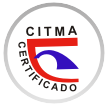Aquatic Ferns and Their Efficiency as Phytoremediators in Contaminated Environments
Aquatic Ferns and Their Efficiency as Phytoremediators in Contaminated Environments
Abstract
The objective of this study was to conduct a literature review of the phytoremediation efficacy of Azolla spp., Lemna minor, and Eichhornia crassipes in contaminated environments. A review of relevant scientific articles that provided information on their ability to remove contaminants in freshwater bodies was conducted. The results show that Azolla spp., in addition to fixing heavy metals, captures atmospheric nitrogen through its symbiosis with Anabaena sp. and can be used as a dietary supplement due to its high protein content. Lemna minor stands out for its rapid reproduction, low cost, and efficient pollutant uptake. Eichhornia crassipes, despite being an invasive species, has an effective root system for capturing metals and nutrients. In conclusion, these species represent sustainable and low-cost alternatives for phytoremediation, thanks to their adaptability, accelerated propagation, and high absorption capacity.
Downloads
Published
How to Cite
Issue
Section
License
Copyright (c) 2025 Agroecosystem Transformation Journal

This work is licensed under a Creative Commons Attribution-NonCommercial-NoDerivatives 4.0 International License.
La editorial "Universo Sur", de la Universidad de Cienfuegos, publica el contenido de la Revista Científica Agroecosistemas bajo una Licencia Creative Commons Atribución-NoComercial-SinDerivar 4.0 Internacional.
© Podrá reproducirse, de forma parcial o total, el contenido de esta publicación, siempre que se haga de forma literal y se mencione la fuente.






